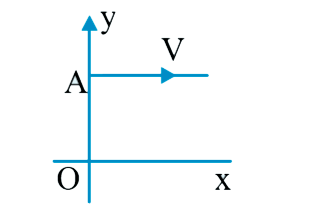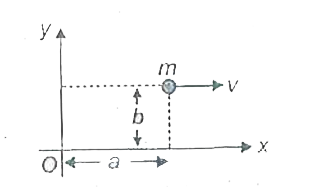A mass M moving with a constant velocity parlale to the X-axis. Its angular momentum with respect to the origin
increase with time
decrease with time
does not change
None of above
The correct Answer is:C
Step by step video, text & image solution for A mass M moving with a constant velocity parlale to the X-axis. Its angular momentum with respect to the origin by Physics experts to help you in doubts & scoring excellent marks in Class 12 exams.
Topper's Solved these Questions
Similar Questions
Knowledge Check
- Question 1 - Select One
Statement - 1 : A particle moves with a constant velocity parallel to the x-axis. Its angular momentum w.r.t. the origin will remains constant.
Because
Statement - 2 : Angular momentum is defined as →L=→r×→PAStatement - 1 is true, statement - 2 is true, statement - 2 is correct explanation for statement - 1BStatement - 1 is true, Statement - 2 is true, Statement - 2 is not a correct explanation for statement - 1Cstatement - 1 is true, statement - 2 is falseDstatement - 1 is false, statement - 2 is true. - Question 2 - Select One
A mass m is moving with a constant velocity along a line parallel to the x-axis, away from the origin. Its angular momentum with respect to the origin.
AzeroBremains constantCgoes on increasingDgoes on decreasing - Question 3 - Select One
A body of mass m is moving with a constant velocity along a line parallel to the x-axis, away from the origin. Its angular momentum with respect to the origin
Ais zeroBremains constantCgoes on increasingDgoes on decreasing
A particle performs uniform circular velocity along a line parallel to the x-axis, away from the origin. Its angular momentum with respect to the origin.
View SolutionA body of mass m is moving with a constant velocity along a line parallel to the x-axis, away from the origin. Calculate its angular momentum with respect to the origin?
 View Solution
View SolutionA particle of mass m is moving with constant velocity v parallel to the x-axis as shown in the figure. Its angular momentum about origin O is
 View Solution
View SolutionA mass m moving with a constant velocity along a line parallel to the axis, away from the origin. Its anguarl momentum with respect to the origin
View SolutionIf a particle of mass m is moving with constant velocity v parallel to x-axis in x−y plane as shown in fig. Its angular moment with respect to origin at any time t will be
View Solution

